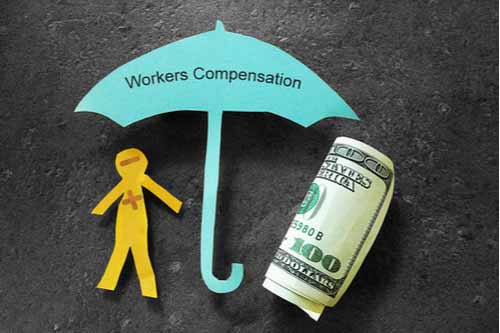Introduction
Experiencing a serious on-the-job accident can be traumatic and overwhelming. It’s not just the physical pain you might endure; there’s also the emotional toll, financial strain, and the complex world of legalities that follows. If you're in this situation, you may find yourself wondering about your rights, responsibilities, and what steps to take next. This article will serve as a comprehensive guide on Key Considerations When Filing Multiple Claims after a Serious On-the-Job Accident.
Navigating the aftermath of an accident at work often involves filing various claims to secure compensation for your injuries. Understanding how to effectively manage these claims can significantly influence your recovery process. From workers' compensation to potential third-party claims, this article will cover everything you need to know.
What is an On-the-Job Accident?
An on-the-job accident refers to any workplace incident that results in an employee sustaining injuries while performing their work duties. Whether it's a slip and fall accident or something more severe like machinery malfunctions, http://knoxomxz719.fotosdefrases.com/top-qualities-to-look-for-in-a-workers-compensation-lawyer these incidents can lead to serious bodily harm or even fatalities.
The Importance of Legal Representation
In the wake of an accident, seeking legal advice from an experienced accident lawyer or employment injury lawyer is crucial. They can provide valuable insights into your rights and help you navigate through the complexities of multiple claims.
Why You Might Need Multiple Claims
When injured at work, you may have grounds for several types of claims:
Workers' Compensation Claim: This is typically the first step for injured employees. Third-Party Liability Claim: If another party (not your employer) contributed to your injury, you might file this claim. Personal Injury Claim: This pertains to compensatory damages for non-economic losses like pain and suffering.Key Considerations When Filing Multiple Claims after a Serious On-the-Job Accident
Filing multiple claims requires careful planning and consideration. Here are some key factors that should guide your decision-making process:
Understanding Workers’ Compensation Laws
Each state has its own workers' compensation laws that dictate how claims are processed and what benefits are available. Familiarize yourself with these regulations to better understand what you're entitled to.
Time Limits for Filing Claims
Deadlines for filing various types of claims can vary significantly. Missing these deadlines can jeopardize your chances of receiving compensation. Consult with an injury attorney or work injury claim lawyer to ensure timely submission.

Gathering Evidence
Evidence plays a vital role in substantiating your claims. Collect medical records, witness statements, photos of the scene, and any relevant documentation promptly.
Disclosure Obligations
When filing multiple claims, it’s essential to disclose all pertinent information accurately. Failing to do so could lead to complications or denials in your case.
Choosing the Right Legal Representation
Selecting a knowledgeable work injury attorney who specializes in handling multiple claims is crucial for navigating the complexities involved effectively.
Assessing Your Injuries
A thorough medical evaluation post-accident can help determine the extent of injuries sustained and ensure appropriate compensation calculations across different claims.

Types of Claims You Can File After an Accident
Let’s delve deeper into each type of claim:

Workers' Compensation Claim
This provides wage loss benefits and covers medical expenses related to injuries sustained at work without needing to prove negligence on part of the employer.
Third-Party Liability Claim
If another entity caused your injury (e.g., defective equipment), you could file against them directly for additional financial restitution beyond workers' comp benefits.
Personal Injury Claim
This encompasses damages for pain and suffering not covered under workers’ comp laws but may require proving negligence on part of another party involved in causing harm.
How Multiple Claims Affect Each Other
While pursuing multiple avenues for compensation can be beneficial, it’s essential to understand how they interact:
Offsetting Benefits: Workers' comp benefits might offset any recovery from personal injury settlements. Legal Strategy: A skilled lawyer will strategize how best to approach each claim without undermining others.Common Mistakes When Filing Multiple Claims
Avoiding pitfalls in this process is crucial:
Not consulting with a seasoned attorney. Failing to keep detailed records. Underestimating claim value due to lack of understanding about future implications.FAQs
Here are some common questions regarding filing multiple claims after experiencing an on-the-job accident:
What if my employer denies my workers' compensation claim?- If denied, consider appealing the decision with assistance from a qualified workers’ compensation lawyer who understands local laws.
- Yes! Often individuals pursue both if applicable; however, it’s important not to double-dip benefits received from one source against another.
- Consult with an experienced injured worker attorney, who will evaluate whether negligence by another party contributed significantly to your injuries.
- Medical records detailing treatment received post-injury; photographs documenting scene conditions; witness testimonies all serve as credible evidence supporting your case!
- Yes! Most states impose strict deadlines; hence why early consultation with legal professionals remains critical!
- Keep meticulous notes about incidents leading up-to-and-following accidents including conversations had with supervisors regarding safety protocols implemented thereafter!
Conclusion
Navigating through multiple claims after experiencing a serious on-the-job accident can feel daunting but understanding key considerations is vital towards achieving favorable outcomes! By working closely alongside knowledgeable attorneys specializing in workplace injuries—such as reputable law firms dedicated solely towards helping clients secure fair settlements—you’ll increase chances significantly towards obtaining necessary support throughout recovery journeys ahead!
This article aims not only at providing valuable insights into dealing with complex scenarios surrounding work-related accidents but also emphasizes importance associated with having proper legal representation along every step taken forward! Remember—you’re not alone on this journey; many resources exist out there ready waiting just-for-you!